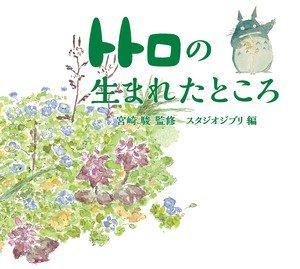
Miyazaki had told the story to Suzuki many times. “Miya-san was out picking up garbage at the edge of Fuchi no Mori, as he did every Sunday, when he noticed the splendor of Kami no Yama,” Suzuki writes. Talking to his friend about the story wasn’t enough though, Miyazaki wanted to show him.
Miyazaki was a so-called “kid of the streets” who grew up in the middle of Tokyo. It wasn’t until he and Akemi were married in 1965 that they moved out to Tokorozawa. It was during his walks around his new residence that Miyazaki was inspired to create My Neighbor Totoro. Proof of this was in the story’s original title, “Tokorozawa ni iru Tonari no Obake” (The Ghostly Neighbor of Tokorozawa) but this was eventually shortened to Tonari no Totoro.
Miyazaki and Suzuki headed to Shin-Akitsu Station and followed a road that runs next to the Seibu train line but eventually found their path is obstructed by fallen trees. In no time, Suzuki lost track of his location.They’re accompanied by a proud Tokorozawa local named Mr. K who chirps up, “Locals say this is the road to Karuizawa.”
At the end of the road is Fuchi no Mori, a place Miyazaki had already been numerous times and has developed an affinity for the place. Those feelings rushed up as the three men approached “Totoro‘s Forest.” They entered Hachikokuyama park, introduced in My Neighbor Totoro as “Nanakuniyama.”

Suzuki was struck by a strange feeling as they entered the area. “It was just like the home of a god,” he wrote. The area’s beautiful greenery caused him to lose sight of reality. Miyazaki’s own response was even more striking. Suzuki compared Kami no Yama, Fuchi no Mori, and Hachikokuyama as “part of Miya-san’s body” and that to lose these places would literally “tear him apart.”
In the middle of the walk, Miyazaki utters, “If I didn’t live in Tokorozawa, Totoro would have never been born.” Suzuki credits this as the first time he was in awe of Miyazaki and his ability to observe things around him with sensitivity.

Miyazaki’s deep connection with Tokorozawa and the surrounding area are the subject of a new picture book, Totoro no Umareta Tokoro (Where Totoro Was Born) with illustrations by both Hayao Miyazaki and Akemi Miyazaki. Hayao Miyazaki drew the spirit-like Totoro and Akemi Miyazaki provided images of the flowers and plant life. The book discusses the area’s natural diversity throughout the seasons with sketches and diary entries by Akemi and image board drawings of the world of My Neighbor Totoro and an interview by Hayao Miyazaki.
The Table of Contents is broken up into six sections: Kami no Yama, Akemi Miyazaki‘s Home Town Sketch Diary (by season), a guide to Hachikokuyama by Toshio Suzuki, Totoro’s World Born from the Tokorozawa Landscape by Hayao Miyazaki, Scenery of My Hometown I Want to Save for the Future: Sayama Hills, and a map of the area.
The book is available in Japan now for 1,296 yen (US$12).
Miyazaki previously wrote about a Tokyo parcel of land, popularly known as “Totoro’s home” because of its appearance in Studio Ghibli and Hayao Miyazaki‘s classic anime film, in Totoro no Sumi Ie (“The Home that Totoro Lives In”). The original home burned down in a suspected arson in 2009, prompting Miyazaki to offer to design a new park. Occupying 840 square meters, the park features over a hundred varieties of plants and a restroom building made using components from the original house. The building was modeled after Totoro’s home.
Source: Publisher Iwanami
Hachikokuyama Image by Nesnad at English Wikipedia [CC BY 2.5], via Wikimedia Commons

